Friday 28th May 2021

This weekend sees the withdrawal from service of Britain’s last Pacer trains. Northern Rail did the decent thing to their Pacer fleet last November while Great Western Railway followed in December.
The DfT’s derogation to use these trains with their outdated non-accessible features runs out on 31st May (having been extended twice from the original 31st December 2019 deadline) so the journey to their final terminus is just days away as Transport for Wales prepares to withdraw its fleet of Class 143s for good.
Since 2020 the concession to keep the trains in service has stipulated they must be coupled up to an accessible train of a different Class. But now even that arrangement has to end.

I paid a quick visit to Cardiff yesterday to have some last nostalgic rides

The interiors were nicely spruced up a while ago with the old style traditional bus seating that characterised these trains for so many years stripped away and replaced by rather nice looking comfortable seats.
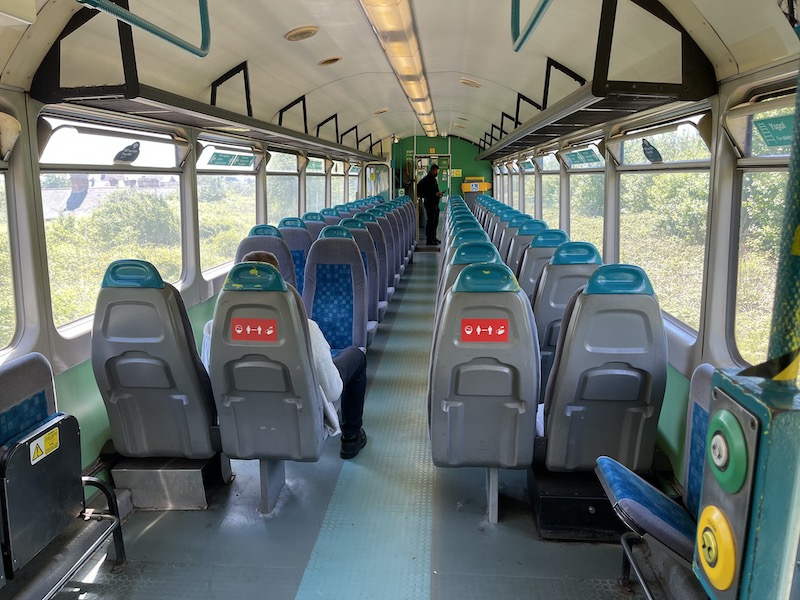
Northern did the same with a few in its fleet too…

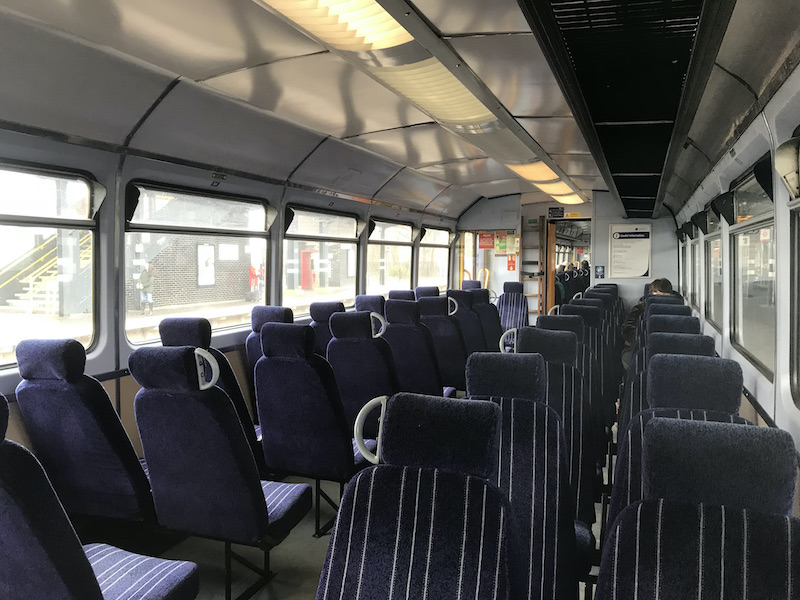
…as I’m pretty sure GWR did too.

This made them actually very pleasant to ride in particularly because of their large windows.

Pacers have been famed for their lightweight bus body construction but when you reckon they were given a 20 year lifespan when built in the early 1980s they’ve actually done the railway well for many more years than originally intended.
They could certainly give you a swaying and rocky ride gaining them the nickname “nodding donkeys” especially when travelling at speed and sported a special type of squealing sound when traversing points and around tight curves.
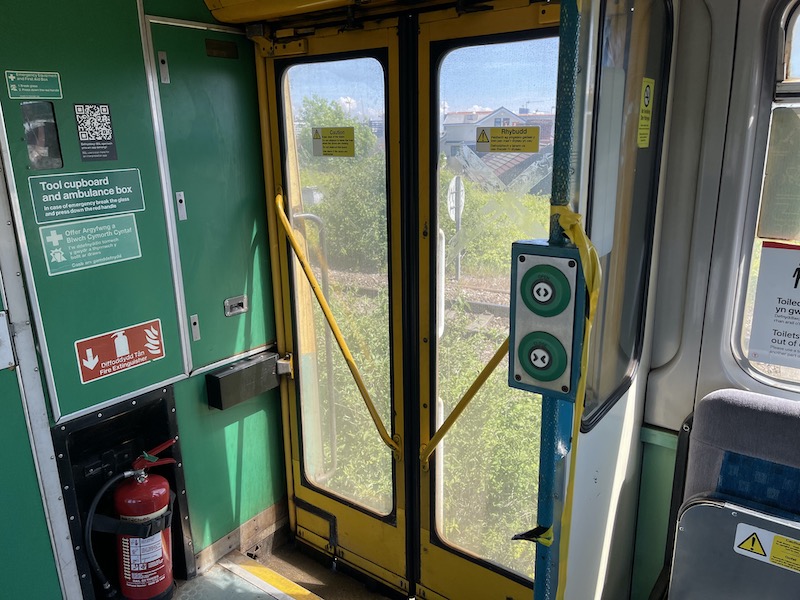
Their two flap doors with a single glass panel in each also had a unique opening and closing mechanism with a characteristic slam shut which could only ever be found on a Pacer.

And it was always interesting to see the slightly different locations of the door open and close buttons on the various Class variations.
There were five slightly different Classes – numbered 140 to 144 in two car format with 165 trains built in total.
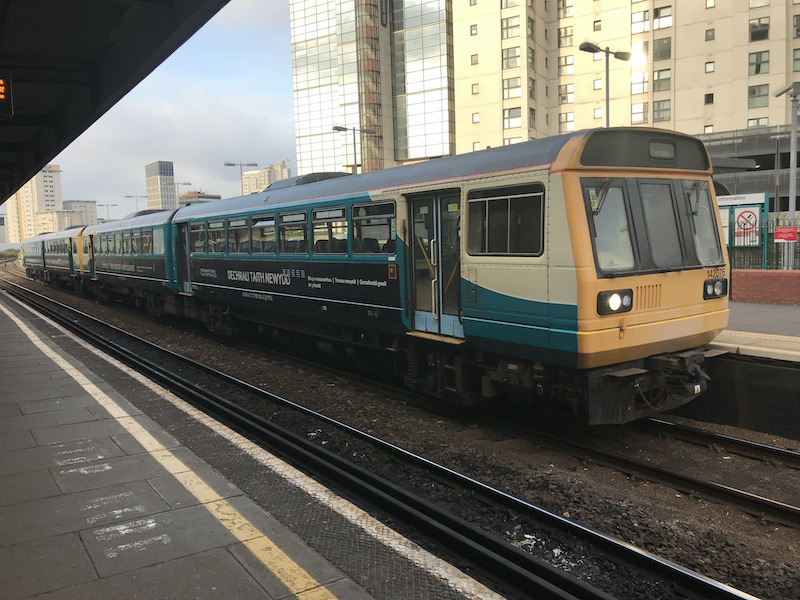
Pacers were a very pragmatic solution in the 1980s with a low cost solution needed when budgets were tight and rural branch lines under threat.

In some ways it’ll be sad to see them disappear but new train fleets are now finally being introduced with all the modern features passengers expect these days.
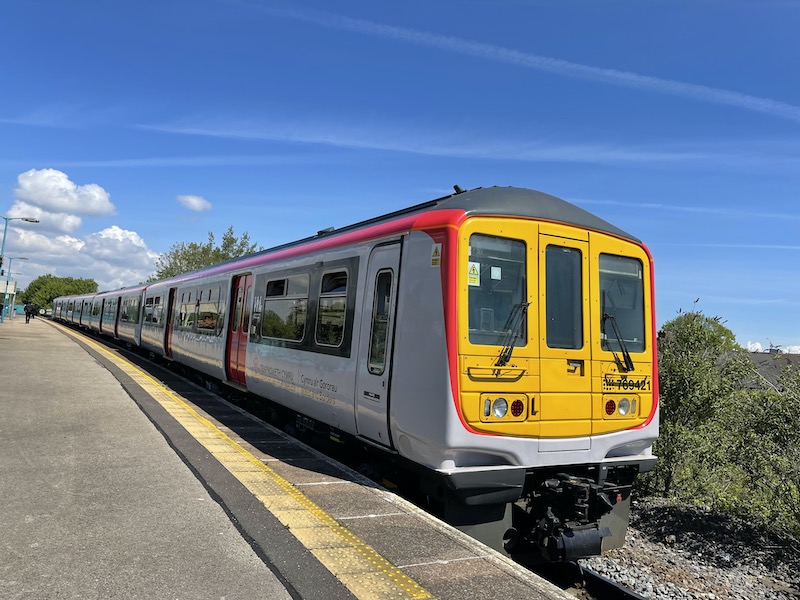
Except it’s ironic that as these trains hit the buffers, Transport for Wales are introducing former Class 319 electric trains once used on Thameslink and now modified to run with a diesel engine (as Class 769) in partial Pacer replacement.

So much for being environmentally friendly.
Passengers now enduring the hard seats on Thameslink’s replacement Class 700 trains might look enviously at the comfort Cardiff Valley Lines commuters now enjoy, including the luxury of usb sockets.

However the seats are low down, as the ones they replaced were, and they’re not especially comfortable, but it did bring back memories to see that pillar once again!

Goodbye Pacers and thanks for your service.
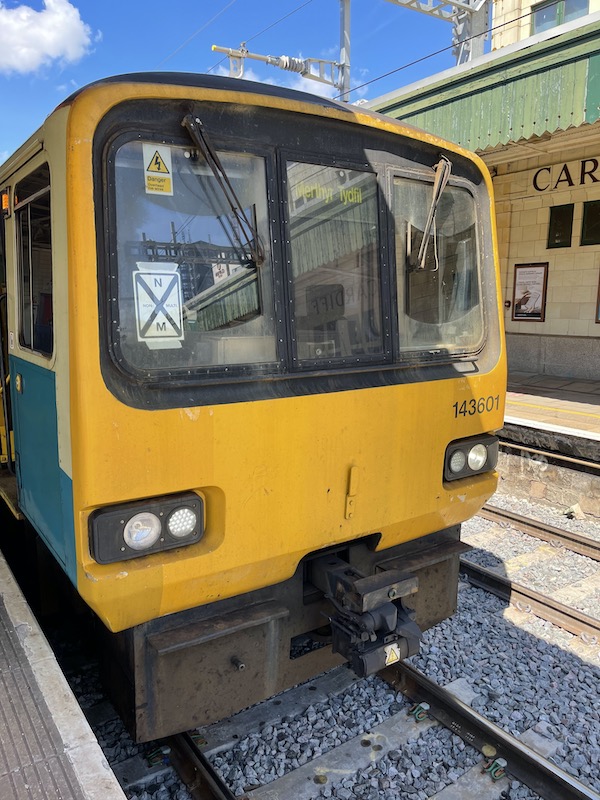
Roger French

A very balanced appraisal. They certainly saved regional rail from a super beeching.
LikeLike
They did, but one shudders to think of their crashworthiness in a serious accident, such as at Ladbroke Grove (yes, I know that wasn’t a Pacer).
They haven’t quite gone yet … I saw one this morning on the Rhymney line as I was driving to the swimming pool!
LikeLiked by 1 person
Bus Back Better
Under the Bus Back Better White paper Local Councils should publishing their plans by the end of June for Consultation
It will generally be at LTA level so that’s normally the County Council where they exist other wise is may be a Unitary authority
Give the lack of interest by LTA’s for bus service I would not hold you breath to see much improvement in bus service. The is money at stake so I guess that will get some interest from them
It will be interesting to see what is in these plans when they appear. It will probably be like the local transport plans they are required to produce. They produce them and file them away. They generally cover a 10 year period and never get updated and most is about road improvements
Hopefully people here will respond to the consultation not that they normally take much notice of responses. These consultations are normally more of the type of this is what we are going to do regardless of what responses they get
LikeLike
As a regular user for a number of years “on the beach” (i.e. Bristol (Temple Meads) to Severn Beach) I became familiar with the sticking door syndrome which was usually cured by a swift kick from the guard (sorry conductor). They were definitely “Marmite” trains either loved or hated and now welcomed by heritage railways across the country.
A nice appreciation, thanks Roger.
LikeLike
The only two occasions I’ve ever felt travel sick on a train were both on Pacers … and no, alcohol was not involved!
The bus seats on the unrefurbished ones were horrific, and I don’t know if any other TOCs managed better but the Northern refurbs put heavy duty seats in at the same spacing as the old paper-thin seats, meaning that there was no legroom at all.
They might have saved BR’s bacon 40 years ago – although that “might” is doing a lot of heavy lifting there, it’s far from certain that they prevented any lines from closure, and any “saving” was more to do with not taking steps to develop a replacement for the First Gen units in time, more likely the only thing they saved was face at British Leyland – but they were long, long, loooooooooooong overdue for replacement. I am delighted that these hateful sheds have gone, and my only regret is that there isn’t a webcam set up on the disposal site so that we can watch each and every one be fed into the grinder.
And what did they cost the railways? We all know about the sparks effect – new, high spec vehicles drive passenger growth, whether it’s trains or buses. But what about the opposite effect? How many passengers were lost from the railways because they found alternative modes of transport – such as skateboarding 🛹 or riding a camel 🐫, to offer just two – to be quicker and more comfortable?
LikeLike
Well I liked them!!
I’d always get in the pacer if one rocked up paired with a 153 or 150 or something in the valleys….
Big windows (even on the doors), an open style saloon and an exhilarating ride that always felt like the driver was in a desperate hurry to get to wherever you were going, and half the time the driver would leave the cab door open so as you could see all the action going on and the view ahead!
Most enjoyable!!
LikeLike
And we await their lightweight, energy efficient, passenger friendly, low cost replacement for lightly-used rural lines.
LikeLike
Class 230 D-Train?
Cascaded class 156?
The obsession with “lightweight” is what led to the substandard Pacers, despite the fact that their whole lifecycle costs were not appreciably any less than the heavier Sprinters.
LikeLike
The Sprinters weren’t an option when Pacers were introduced; BR’s only alternative was the *extremely* expensive class 210.
It was only because none of the funding authorities [outside of the Northern PTEs] were willing to pay for the 210 that BR looked at a lower cost variant and came up with the 150. Had HM Treasury been convinced to authorise BR spending on 210s we wouldn’t have any of the 15x series, but given that HM Treasury were only convinced to allow BR to have 15xs on the basis of two 15x cars replacing three DMU/hauled vehicles scrapped, we can reasonably assume the calculation would have been two 210 cars for a minimum of four DMU/hauled vehicles scrapped or even an even worse replacement ratio.
LikeLike
The Pacers where ok and people only really started to moan about them in about the last 15 years encouraged by the press and stories by journalists who lived in London and probably had never been on one .I think that although they slightly resembled a Leyland National bus they where a lot stronger as one survived been hit by an EWS class 67 locomotive if I recall.the 67 was on a postal train I believe.it won’t be the end of them as a few preserved railways have them and as coal burning becomes more and more difficult,not a bad thing if you ask me!, they’ll be looking for trains other than steam to run on their tracks .
LikeLike
I had never read any negative press about them from London-centric media, because I’m sure most of the London-centric media are blissfully unaware of them, with the home counties never having been blighted by the wretched things – I can’t imagine that many TV or national news journos are regularly travelling on suburban lines around Sheffield, Manchester or the Welsh Valleys on a regular basis…
I didn’t really know anything about them before riding in them, and that was enough for me to make my mind up that they were an abomination!
LikeLike
dear sir, if you come back up north in the summer,moorsbus returns in july for 3 months on saturdays and sundays from york,etc. excellent blog on dalesbus,perhaps next time trying the york services on dalesbus 822/825 to fountains abbey,etc. it will be interesting mid summer how transdev will revitalise yorkshire tiger,but anything is better than it is now! kind regards anthony wilson
On Fri, 28 May 2021 at 06:01, BusAndTrainUser – journeys around Britain by bus and tra
LikeLiked by 1 person